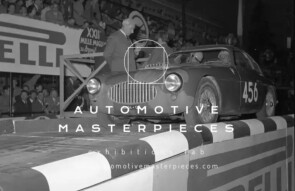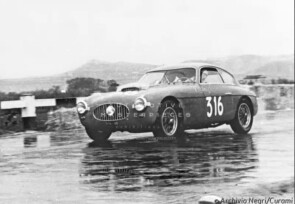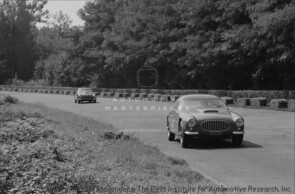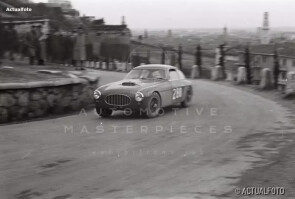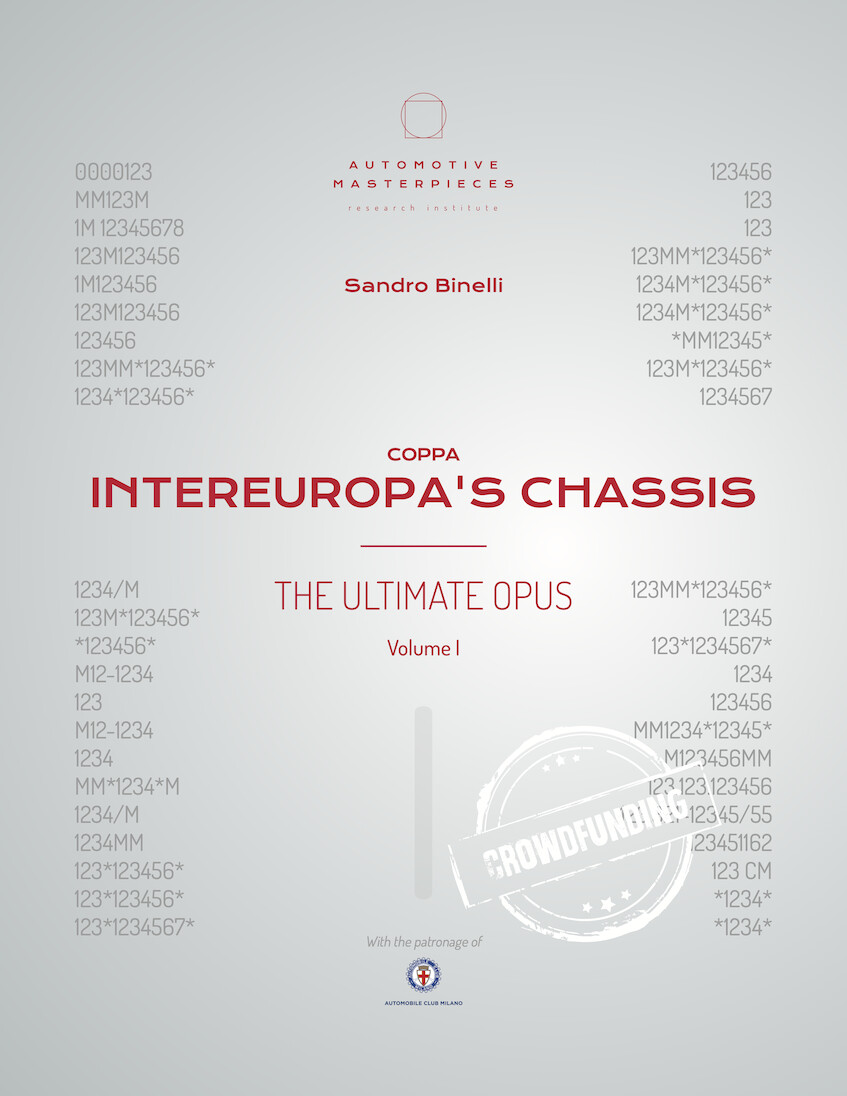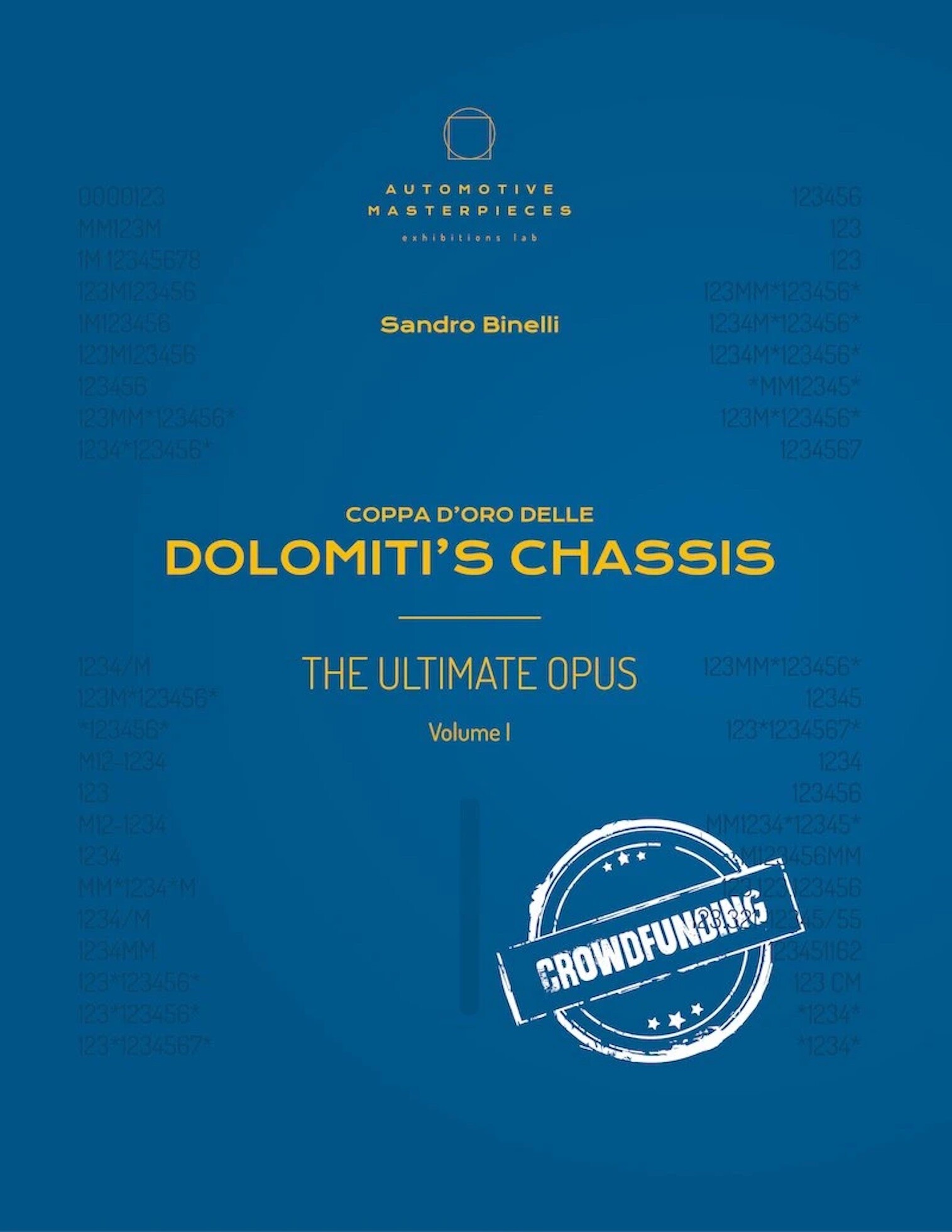
1953 Fiat 8V ZAGATO
ON/OFF
Why am I an Automotive Masterpiece?
K. Famous chassis’ cars
This is the 3rd (of 3) pre-production Zagato model
L. Limited edition cars
no. 3 manufactured
In the postwar period, Fiat was working on an eight-cylinder engine internally known as Tipo 106. The engine was originally designed by Dante Giacosa for a luxury sedan, but that project was stopped. Rudolf Hruska, at the time working at the S.I.A.T.A., was given the task to design a car around the V8 engine. The development took place in absolute secrecy. As not to stress the experimental department of Fiat, production of the chassis was also taken up by S.I.A.T.A. Styled by chief designer Fabio Luigi Rapi, the Fiat 8V or “Otto Vù” was presented to the Italian press in February 1952 and first exhibited the following March at the Geneva Motor Show. The car shapes saw several changes in time: the prototype used an art deco grill extending into the hood which initially characterized the examples of the first series. A second series was made featuring four headlights with some of the later cars having a full-width windscreen. A high-performance coupé, destined to compete in the GT class: the 2-liter 8V model was a departure from the usual Fiat production. It was really welcomed by Italian private drivers, it inspired the tuners and it was, in a word, the car to beat in the 2-liter class, also thanks to the special versions built by Zagato or Siata. The Fiat V8 had a 70° V configuration of 1996 cc of displacement, at 5600 rpm the engine produced 105 hp in standard form with double two-barrel Weber 36 DCS carburetors, giving a top speed of 190 km/h. Some engines were fitted with two huge four-throat Weber 36 IF4/C carburetors offering 120 hp, but the intake manifold was very rare. The Fiat 8V is the only eight-cylinder built by Fiat. The engine was connected to a four speed gearbox. The car had independent suspension all round reworking the Fiat 1100 ones and drum brakes on four wheels. As the body was welded to the chassis it was a semi-unitary construction. Only 114 of these high-performance coupés had been produced, 64 of them with a “Fiat Carrozzerie Speciali” body, 34 first series and 30 second series. It was made available anyway in different body styles, offered by the factory and by various coachbuilders like Zagato, Pinin Farina, Ghia and Vignale. The production ceased in 1954.
The relationship between the Fiat 8V and Zagato began in 1952 when Ovidio Capelli, gentleman driver and FIAT dealer in Milan, commissioned a special body for his 8V chassis no. 000002 to Zagato. Cappelli was looking for a car that was lighter and faster than the production 8V designed by Fabio Luigi Rapi. The one-off was built in aluminum, embodied an “essential beauty” in terms of design, and had excellent racing qualities thanks to its lightness and agility. Cappelli’s victories convinced Fiat and Zagato to build together a small series of the 8V, leader in the GT class. Elio Zagato himself, as a perfect front man for the family business, also achieved good racing results with these cars. Carrozzeria Zagato bodied 31 cars, of which 22 were new from the bare chassis, and the other 9 were re-bodied examples originally with Fiat bodywork; within this group, there were 5 “Elaborata” (derived from the Rapi-designed model), and a one-off spider. Only six cars were built with the famous “double bubble” roof.
Chassis 106.000059 was delivered by Fiat to Zagato as rolling chassis in September 16, 1953. Before going in full production, Zagato built three pre-production cars on chassis 000057, 000058 and 000059. This is the third pre-production Zagato model. These three cars can be identified by the two-pieces, curved-in windscreen. This feature and the much lower roof line are the major differences with the old Capelli car. As with the ex-Ovidio Capelli coupe, these three cars used Plexiglass windows all round, except for the windshield. To fit the lightweight aluminium body on the existing Fiat chassis Zagato workers cut off the upper part of the original bulkhead to weld another part which was more flat on top and so lowering the overall height. To keep the front end as low as possible, they modified the original air-cleaner, smoothing the sharp edges. Originally these three cars had no air outlet in the front fenders a feature which was add on later cars. Chassis 106.000059 was original fitted with engine number 000110 in 1953 and with a new engine in 1956 (n. d'ufficio 16127556). This car was bought new by a Udine gentleman driver Aurelio Pellegrini that raced under the colors of the Elio Zagatos's Scuderia Sant'Ambroeus. It ran the 1954 Coppa d'Oro delle Dolomiti finishing 19th overall, 1955 Mille Miglia, 1956 Mille Miglia and several other races. The third owner broke the car in Sweden in late 1959. It remained there for almost thirty years. It is interesting to compare the 1956 and the 1959 photos. In 1956 there were no trapdoors in the front fenders and the scoop opening was bigger and with bug deflector than on the later photo taken when the car was in Sweden.

